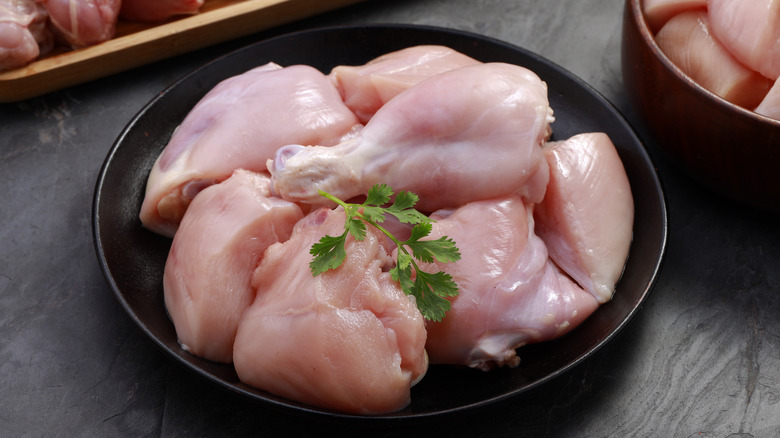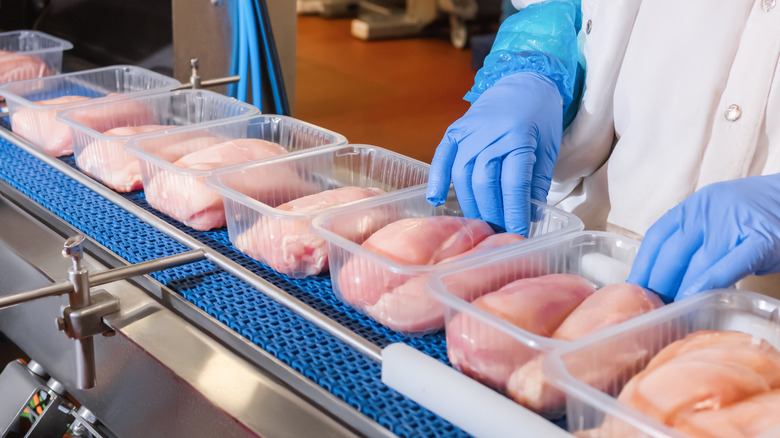The Grocery Store Chicken Buying Tip You Should Know
Finding the perfect apple at the grocery store is an art many of us have perfected. Shopping for raw meat, however, can be an intimidating endeavor if you don't know what to look for. That's why TikTok user Britt S. took to the app to share a nugget of advice that could help if you plan on buying chicken during your next grocery trip.
In a video that has garnered millions of views on TikTok, Britt explains that when the plastic wrapped around raw chicken lies flat against the meat, it's a good indicator that the meat is safe to consume. She then pans to a package of chicken wrapped in plastic that appears to be taut and filled with air. While pressing on the air-filled casing she says, "But if [the plastic] is bubbled up like this, that means that [the chicken] has changed temperature too quickly," adding, "So, always avoid the meat that is bubbled up like this."
In order to safely store raw chicken, it must be kept at a temperature below 40 degrees. As Britt pointed out, when the temperature of raw chicken rises too quickly, it lends to an environment where harmful bacteria can rapidly reproduce. But is bubbled-up plastic wrap really a sign that the meat has spoiled?
Causes of bloated food packaging
When bacteria forms in spoiled food, they begin to produce gasses like carbon dioxide, which can cause the plastic packaging to swell (per Taste of Home). Be that as it may, Meredith Carothers, a food safety expert with the U.S. Department of Agriculture's Food Safety and Inspection Service told Eating Well that while bubbled-up plastic wrap could certainly be an indicator that the food is no longer safe to eat, the packaging could also be bloated for a far less nefarious reason.
Carothers explains that some foods, like raw chicken, are packaged using "modified atmosphere packaging (MAP)," in which a concoction of gasses are added to the packaging in order to extend the product's shelf life. "This is a USDA-approved packaging process, and there is no food safety concern," Tom Super, a spokesperson for the National Chicken Council, told Politifact. "The puffiness of the bags actually indicates the packaging is properly sealed." He points out that a foul smell, discoloration, leaking, and an expired Use By date provide a better gauge of determining the freshness of meat.
Nevertheless, Carothers says that an icky smell may not always be detectable when meat has gone bad. As such, she suggests "err[ing] on the side of caution" and discarding meat with swollen packaging to avoid any unsavory intestinal consequences.

